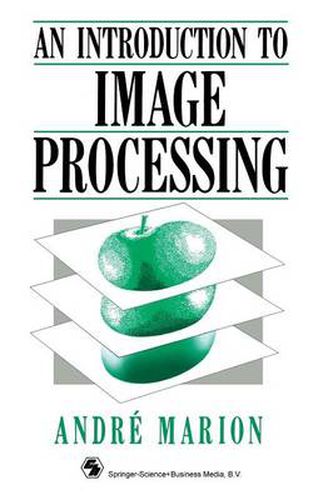Readings Newsletter
Become a Readings Member to make your shopping experience even easier.
Sign in or sign up for free!
You’re not far away from qualifying for FREE standard shipping within Australia
You’ve qualified for FREE standard shipping within Australia
The cart is loading…






This title is printed to order. This book may have been self-published. If so, we cannot guarantee the quality of the content. In the main most books will have gone through the editing process however some may not. We therefore suggest that you be aware of this before ordering this book. If in doubt check either the author or publisher’s details as we are unable to accept any returns unless they are faulty. Please contact us if you have any questions.
I. The past. the present … and the future It is possible to take the view that ever since it began, the ancient branch of physics known as Optics has been concerned with process ing images. But since the Nineteen-Thirties increasingly close ties have been forming between Optics, which until then had been largely based on instruments, and the sciences of communication and infor mation arising out of mathematics and electronics. Such developments follow naturally, since communication systems and image-forming systems are all designed to receive or transmit information. Further more the same mathematical forms are used for describing the beha viour of electrical and optical systems. It is a question of systems theory, particularly linear systems, and of Fourier’s analysis methods, which together constitute an important part of Signal Theory. In the case of communication systems carrying signals of an electrical nature, information is time-related or temporal. Transmitted signals are one-dimensional and functions of a single variable, time t. In the case of optical systems information is spatial in nature. Signals are distributions of light intensity in space. In general they are treated as two-dimensional signals, being functions of two spatia! variables written as x and y. In the early Fifties the way forward became clearer still when some scientists at the Institut d'Optique in Paris began using optical filtering techniques in coherent light in order to enhance the quality of photographs.
$9.00 standard shipping within Australia
FREE standard shipping within Australia for orders over $100.00
Express & International shipping calculated at checkout
This title is printed to order. This book may have been self-published. If so, we cannot guarantee the quality of the content. In the main most books will have gone through the editing process however some may not. We therefore suggest that you be aware of this before ordering this book. If in doubt check either the author or publisher’s details as we are unable to accept any returns unless they are faulty. Please contact us if you have any questions.
I. The past. the present … and the future It is possible to take the view that ever since it began, the ancient branch of physics known as Optics has been concerned with process ing images. But since the Nineteen-Thirties increasingly close ties have been forming between Optics, which until then had been largely based on instruments, and the sciences of communication and infor mation arising out of mathematics and electronics. Such developments follow naturally, since communication systems and image-forming systems are all designed to receive or transmit information. Further more the same mathematical forms are used for describing the beha viour of electrical and optical systems. It is a question of systems theory, particularly linear systems, and of Fourier’s analysis methods, which together constitute an important part of Signal Theory. In the case of communication systems carrying signals of an electrical nature, information is time-related or temporal. Transmitted signals are one-dimensional and functions of a single variable, time t. In the case of optical systems information is spatial in nature. Signals are distributions of light intensity in space. In general they are treated as two-dimensional signals, being functions of two spatia! variables written as x and y. In the early Fifties the way forward became clearer still when some scientists at the Institut d'Optique in Paris began using optical filtering techniques in coherent light in order to enhance the quality of photographs.